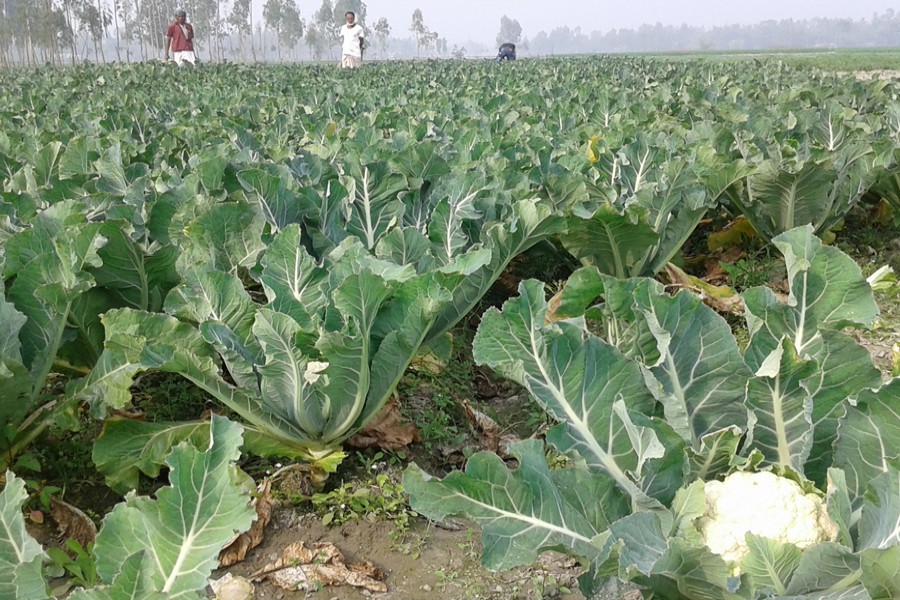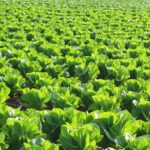Cauliflower farming is emerging as a profitable agricultural venture in Kenya, attracting the interest of farmers who want to diversify their crops and capitalize on rising demand. While not a traditional staple in Kenyan diets, cauliflower has found increasing popularity in urban markets, supermarkets, and high-end restaurants due to its health benefits and versatility in various dishes. With the right knowledge and practices, cauliflower farming offers high returns, especially in areas such as Nairobi, Kiambu, and Kisumu.
Cauliflower is a cool-season vegetable that grows in clusters of white florets known as curds. It is packed with essential nutrients, including vitamin C, antioxidants, and fiber. Given the right conditions and proper cultivation techniques, cauliflower farming can be a rewarding business, even for beginner farmers. This guide explores the best methods for growing cauliflower in Kenya, from seed selection and land preparation to pest control and market opportunities.
Popular Varieties of Cauliflower for Kenyan Farmers
There are several varieties of cauliflower that thrive in Kenya’s diverse climate conditions. Choosing the right variety can significantly impact yield and profitability. Some of the top varieties suited for Kenyan farmers include:
- Clapton – A reliable, early-maturing variety that is highly resistant to diseases and pests. It produces uniform heads and is widely favored by local and international markets.
- Graffiti – Known for its purple color, this variety adds a unique appeal to dishes and is highly sought after by high-end restaurants and health-conscious consumers.
- Fioretto 60 – A hybrid variety that produces high-quality heads and has a fast maturation rate, making it ideal for farmers seeking quick returns.
- Flame Star Hybrid – A top choice for commercial farmers due to its high yield potential and uniform curd size. This variety is also resistant to environmental stresses, making it ideal for Kenyan conditions.
- Kibo Giant – This variety is known for its large, dense curds and high yield. It performs well in areas with sufficient rainfall and irrigation.
- Cheddar AGM – A unique orange-colored cauliflower variety that is in demand both locally and in international markets. It offers good resistance to pests and diseases.
When selecting a variety, it is essential to consider market demand, climate conditions, and the growth characteristics of the variety to ensure the best results.
Ideal Growing Conditions for Cauliflower in Kenya
Cauliflower requires specific environmental conditions to thrive. In Kenya, the best areas for cauliflower farming are those with moderate temperatures, fertile soil, and reliable rainfall. Here’s a breakdown of the optimal conditions for cauliflower cultivation:
1. Climate and Temperature
Cauliflower is a cool-season crop, and it grows best in regions with temperatures between 12°C and 28°C. Areas with cooler climates, such as highland regions, are ideal for cauliflower farming. Exposure to extreme heat can cause the crop to bolt (flower prematurely), reducing yield and quality.
2. Soil Fertility
Cauliflower requires fertile, well-drained soil with a pH range of 6.0 to 6.5. Soil enriched with organic matter helps retain moisture and provides essential nutrients for healthy growth. It is advisable to conduct a soil test before planting to determine the necessary amendments.
3. Irrigation
Since cauliflower needs consistent moisture, farmers in areas with unreliable rainfall should consider drip irrigation or overhead irrigation systems. Proper irrigation is critical for preventing stress and ensuring optimal growth.
4. Altitude
Cauliflower grows best in regions with an altitude of 1000 to 2500 meters above sea level. These areas typically offer the cool temperatures and adequate rainfall needed for healthy cauliflower production.
Planting and Propagation Techniques
Cauliflower is typically grown from seed, which is first germinated in a nursery before being transplanted to the field. The steps to successful planting include:
1. Nursery Preparation
Prepare a nursery bed for seed sowing, ensuring it is well-drained and free from weeds. Plant the cauliflower seeds in rows, spacing them 5 cm apart. Cover the seeds lightly with soil and water gently to encourage germination. The seedlings should be ready for transplanting after 3 to 4 weeks.
2. Field Preparation
Before transplanting, prepare the field by clearing weeds and tilling the soil. Apply well-rotted manure or compost to enrich the soil. Ensure the soil is adequately moist to provide a favorable environment for the seedlings.
3. Transplanting
Transplant the seedlings when they are around 4 to 6 weeks old. Space the seedlings about 60 cm apart within the rows and 75 cm between rows to allow enough space for the plants to grow. Water the plants immediately after transplanting to help them establish.
Fertilization and Soil Management
Cauliflower is a heavy feeder, meaning it requires substantial nutrients to grow and produce high-quality heads. Proper fertilization is crucial for a successful crop.
1. At Planting
Apply well-balanced fertilizers containing nitrogen (N), phosphorus (P), and potassium (K) before planting. A common recommendation is to use a compound fertilizer with a ratio of NPK 17:17:17 at a rate of 100 kg per hectare.
2. Side Dressing
Top-dress the plants with calcium ammonium nitrate (CAN) or urea during the growing season. This helps promote strong growth and head formation. Apply the fertilizer in two or three doses during the crop’s growth period.
3. Organic Fertilizers
In addition to chemical fertilizers, use compost or manure to improve soil structure and fertility. Organic matter enhances water retention and provides essential micronutrients to the cauliflower plants.
Managing Pests and Diseases in Cauliflower Farming
Like all crops, cauliflower is susceptible to a variety of pests and diseases. Effective pest and disease management is essential for maximizing yield and quality. Here are some common challenges and their solutions:
1. Aphids
Aphids are small insects that attack cauliflower plants, causing stunted growth and leaf damage. Aphids can be controlled using insecticidal soap, neem oil, or by introducing natural predators like ladybugs.
2. Diamondback Moth
The diamondback moth is a major pest for cauliflower farmers in Kenya. This pest feeds on the leaves and curds, reducing the quality of the harvest. Control methods include applying approved insecticides, rotating crops, and practicing good field hygiene.
3. Downy Mildew
This fungal disease causes yellow spots and moldy growth on the leaves. Use fungicides and ensure proper spacing between plants to improve airflow and reduce humidity, which favors fungal growth.
4. Black Rot
Caused by bacteria, black rot affects cauliflower by causing yellowing of the leaves and wilting. Preventative measures include crop rotation and selecting disease-resistant varieties.
5. Cutworms
Cutworms are nocturnal pests that cut through young seedlings. Protect seedlings by using collars around the stem or applying insecticides when necessary.
Harvesting Cauliflower
Cauliflower matures between 3 to 5 months, depending on the variety and growing conditions. Harvest when the curds are firm, compact, and uniformly white, with no signs of flowering. Use a sharp knife to cut the curd at the base while leaving the outer leaves intact for protection.
Harvesting Tips
- Harvest in the morning to reduce heat stress on the plants.
- Handle the curds gently to avoid bruising, as cauliflower is highly perishable.
- Ensure the curd size meets market standards to maximize profit.
Market Opportunities for Cauliflower in Kenya
The market for cauliflower in Kenya has grown steadily, with both local and international demand on the rise. Key buyers include supermarkets like Carrefour, Naivas, and Tuskys, as well as high-end restaurants, hotels, and caterers. International markets, including Uganda, Rwanda, and Tanzania, are also viable options for farmers looking to expand their sales.
Cauliflower is highly sought after in urban areas, where consumers are increasingly focused on healthy eating. In Nairobi, the demand for fresh, organic cauliflower continues to grow, making it an attractive investment for farmers.
Challenges and Considerations
Cauliflower farming comes with its share of challenges, including high input costs, the risk of pests and diseases, and fluctuating market prices. Farmers must be diligent in managing these risks by:
- Keeping up with current pest management practices
- Diversifying their markets to reduce reliance on a single buyer
- Adjusting production schedules to match peak market demand
Cauliflower farming in Kenya presents a valuable opportunity for farmers looking to diversify their crops and achieve high yields. By selecting the right variety, adhering to best farming practices, and staying informed on market trends, cauliflower can be a profitable and sustainable business. With the increasing demand for fresh and healthy vegetables, this crop offers great potential for both small and large-scale farmers.





